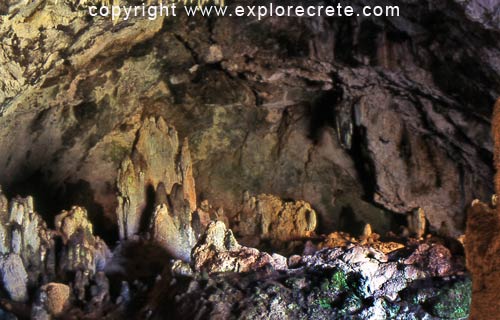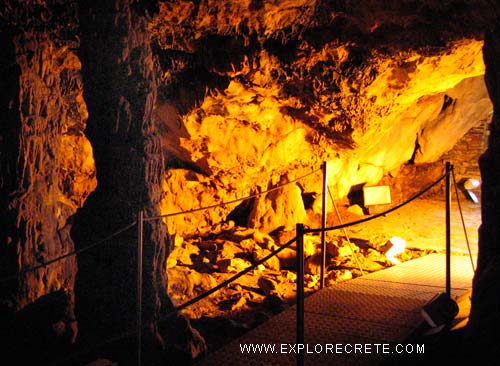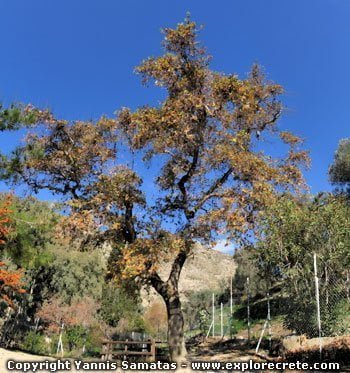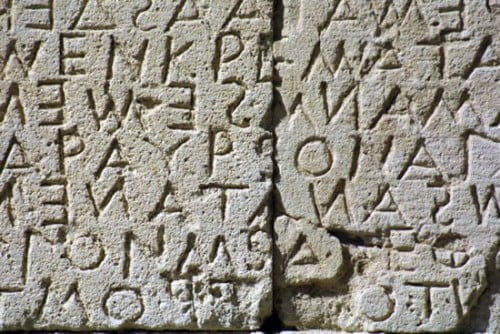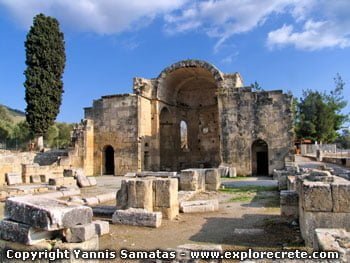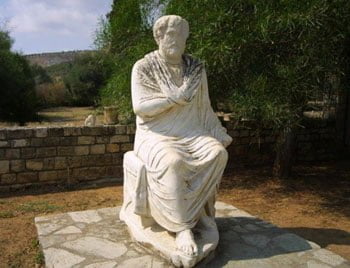Ideon Cave or Idaion Antron
Ideon Cave in Crete
The Ideon Cave or Ideon Andron is found on Mt Ida or Psiloritis, the highest mountain in Crete. A different spelling is Idaion Antron, which is closer to the Greek spelling Ιδαίον Αντρον.
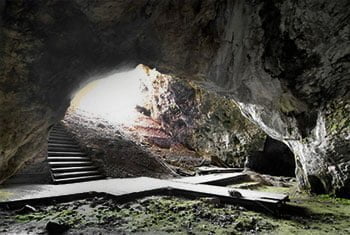
The Ideon Cave is one of the greatest cave sanctuaries in Crete, as important as the major Greek temples. It flourished in antiquity (4000 BC to the 1st century AD).
The Ideon Cave was famous for being the place where Zeus, the Father of the Gods, was born and grew up. This claim is contested by the Psychro (Dikteon) Cave in Lassithi Plateau, as Hesiod in his “Theogony” does not specify the precise location of the cave.
Location of the Ideon Cave

The Ideon Cave is on the east side of Mount Ida in central Crete, at an altitude of 1,498 metres. The cave is 20 kilometres after the village of Anogia and a few metres higher than the Nida Plateau.
On entering the Ideon Andron Cave you find yourself in the main chamber, which is 40 metres long and 50 wide. The chamber has been excavated twice, the first time by Federico Halbherr in 1885 and the second by Yannis Sakellarakis in 1982.
We must note that the Ideon Cave is not particularly impressive as a cave, unlike the Dikteon Cave, which is visited by thousands of people each year.
However, it is no coincidence that the Ideon Cave was chosen as the birthplace and place of worship of the most important god in ancient Greece. The Ideon Cave lies on the mountain-emblem of Crete, Mount Psiloritis, on the south side of which lies another important cave sanctuary, the Kamares Cave. Even today, on the highest peak of Psiloritis, at an altitude of 2,456 metres, there is a tiny stone church dedicated to the Holy Cross, where services are held once or twice a year
Legend has it that Mount Ida has the privilege of seeing the sun before the dawn. It is true that on clear days you can see almost the whole of Crete from here, as well as the Cyclades and even Mount Taygetus in the Peloponnese.
The myth of the Birth of Zeus
According to a prophecy, the son of Cronus and Rhea would overthrow his father, who defended his position by devouring his children. Mother Rhea, however, could not bear this, so she tricked her husband and gave him a rock wrapped in swaddling clothes to swallow instead of her last-born son.
She hid the infant deep in a cave where he was nursed by the nymph Melissa and the goat Amalthea, whose horn produced all manner of goods. The baby’s cries were covered by the legendary Curetes, who beat drums and clashed their shields as they danced. Thus the prophecy came true, and when Zeus came of age he overthrew his father Cronus and claimed his power.
- Read the whole myth of the birth of Zeus in Crete
Other names of the Ideon Cave
The Ideon Cave, or Cave of Ida, is also known as the Spiliara tis Voskopoulas (Cave of the Shepherdess). The locals say that near the cave was buried the wife of Charidimos (the lord of Gortys and rival of Erotokritos), who accidentally shot her with an arrow while hunting on Mount Psiloritis, as Vicenzos Kornaros says in his narrative poem Erotokritos (a classic work of Modern Greek literature written in the Cretan dialect).
Another name of the Ideon Cave is the Arkession Andron (Cave of Aid). Worshippers came to the cave to seek the aid of Zeus, who, legend has it, had also received aid in the past and escaped death.
References and Myths
One of the pilgrims to the Ideon Cave was the great ancient sage from Samos, Pythagoras. It is said that he took part in the ceremonies at the cave and was even initiated into the mysteries of the Cretan Zeus. We do not know details of the mysteries of the Ideon Cave, because initiates were forbidden to speak of them to the general public.
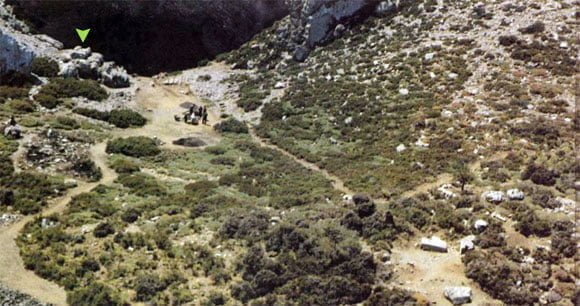
Pythagoras described an altar carved in the natural rock at the cave entrance, which can still be seen today. Inside the cave was a large ivory throne in honour of Zeus, but this has now been lost.
Festivals were held at the Ideon Cave each year, originally in honour of the god of vegetation, who died and was reborn in the cycle of the seasons. The Minoan god of vegetation was later replaced by the Cretan-born Zeus, the local young Zeus, who according to local myth also died and was reborn each year. Theophrastus tells us that during the ceremonies, worshippers hung offerings from the branches of a poplar in front of the entrance to the cave
Even Minos, the legendary king of Crete, came on pilgrimage to the Ideon sanctuary every nine years to receive the renewed laws from his father Zeus.
- The excavation of the Ideon Cave – Archaeological Finds
- Zominthos, a Minoan town revealed near the Ideon Cave
© explorecrete.com All Rights Reserved. Reproduction or copying without permission is prohibited.

